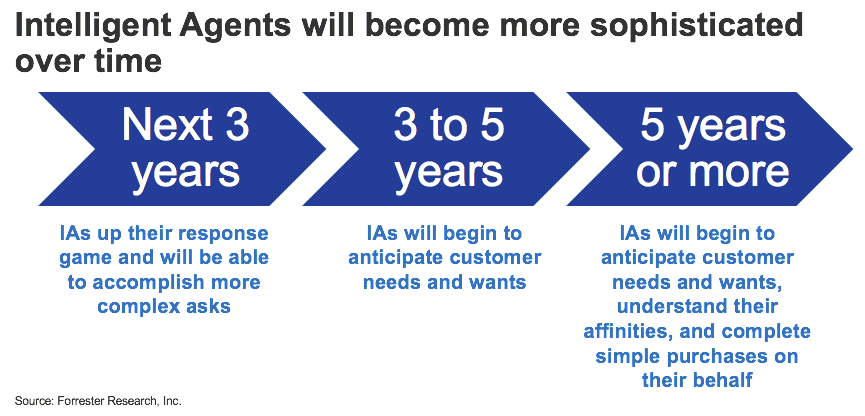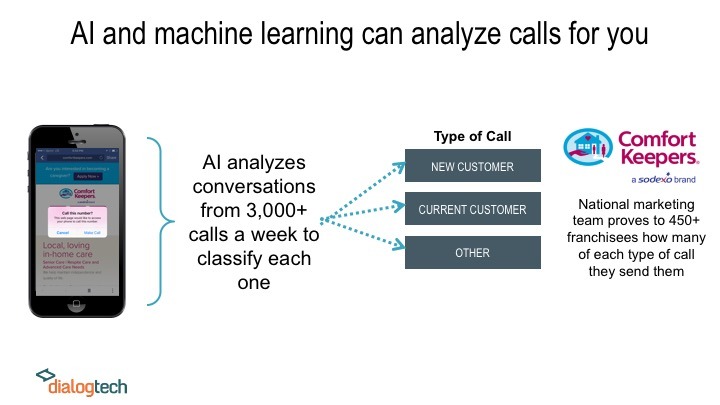As a fellow marketer, I’m sure you are as focused on your daily search ROI as we are. It can be hard to optimize for the present, much less consider what might impact your search ROI in the future. We all know that smartphones have already changed search forever, but there are also new and emerging trends in voice search that you should consider today that will impact your SEM and SEO ROI tomorrow.
Forbes named 2017 “the year of voice search,” as 43% of US online adults now use a digital assistant and 97% say they like to get general information from digital assistants today. Voice assistants are in billions of homes, whether as part of our smartphones (like Siri and Cortana) or as new products like Amazon’s Echo. It’s a trend that search marketers shouldn’t ignore.
Thankfully, Forrester Research has analyzed the expected impact of voice on SEO and SEM, which they covered in a recent webinar with DialogTech. Here are 4 suggestions that Forrester recommends marketers can use now, as well as to prepare for the future impact of voice on search:
1. Revamp your SEO strategy with voice in mind.
When a voice search is conducted, artificial intelligence (AI) tools like Siri and Cortana source the majority of their information from search engines. This means you need to take the time to understand what questions consumers may be asking that could be answered by your site. Then be sure you have existing content that answers these questions.
Alternatively, you can create new content to answer these inquiries in a simplistic format such as a bulleted list, table, or FAQs page. This will help ensure that your brand’s content is provided more frequently when voice searches are used.
Pro-Tip: If you have a search box on your site, go through the searches to discover valuable new content to create on your site based on what consumers are looking for.
2. Understand how your customers are finding you.
The consumer journey has shifted to one of omni-channel discovery — your customers are using a variety of channels to seek out information about your brand or service. In order to be prepared for the future of voice and from where voice assistants may be sourcing information, you must understand all of the places and channels that your customers are looking. By utilizing an omni-channel marketing dashboard you can include data from all sources, including Google Analytics, AdWords, Facebook, and more.
Pro-Tip: Remember that these channels include places you may not immediately think of, such as apps, Facebook messenger, your Apple watch, Twitter, or even your Amazon Echo. Be sure to monitor interactions from these channels and understand why customers are using each and at what stage they are in the buyer journey.
3. Localize your marketing.
Did you know that one-third of all mobile searches today are local in nature? Often times, consumers searching for your brand aren’t looking for pricing or availability, but are trying to find the phone number for the location nearest to them. Whether your customers are searching for you online or via voice, it is important to tailor your content to be relevant to the area in which consumers live or will be traveling. When you think in terms of voice search, consumers are going to ask questions that are personally and locally relevant. Regardless of how many locations you have, you want to ensure that when customers ask questions specific to the area they live, that your site has the answers.
Pro-Tip: Tailor your landing page to be locally relevant and optimized for SEO. There are many elements to the perfect local SEO landing page, but a crucial one is having all location information and phone numbers clearly listed. Furthermore, be sure that your phone numbers route to the correct location or agent in the same city or state as the caller. Also be sure to tailor paid search ads and click-to-call ads with the same information.
Forrester research found that 59% of customers are looking for easy access to contact information when they conduct local searches and 56% find it important to be able to contact a business via click-to-call extensions.
4. Don’t forget about branding.
Branding becomes more important when a voice search is conducted versus an online search. When you ask an IA (intelligent agent) such as Siri or Alexa a question, it usually returns only one answer. According to Forrester, it is estimated that in five years, IAs will be able to make purchase decisions for you.
Intelligent agents will know what brands you gravitate toward and prioritize them. If your brand doesn’t have a great affinity with your customer base, you may be weeded out of the search results.
Pro-Tip: A great example of this is how Capital One has built a skill for customers using Alexa to check their balances and have an answer to “What’s in your wallet?”.
Use the Right Technologies to Optimize Marketing ROI from Voice Search
In order for your marketing to be successful, be sure to use an SEO tool and social listening platform to show you the type of content that you should be creating, what your competitors are doing, and a holistic view of how people are talking about your brand across all channels.
Perhaps most importantly, you should be sure you are using a call analytics tool in order to understand the type of calls you are receiving, what questions customers ask most frequently on calls, and where they are in the customer lifecycle during the call. For example, by using DialogTech’s conversation analytics, senior care provider Comfort Keepers has AI analyze conversations from 3,000+ calls a week and classify each one automatically for insights.
By analyzing phone conversations, you can also improve SEO by understanding what customers are asking and updating details on your site to answer those questions. This is a key way you can ensure your brand and website are ready for the future of voice.


